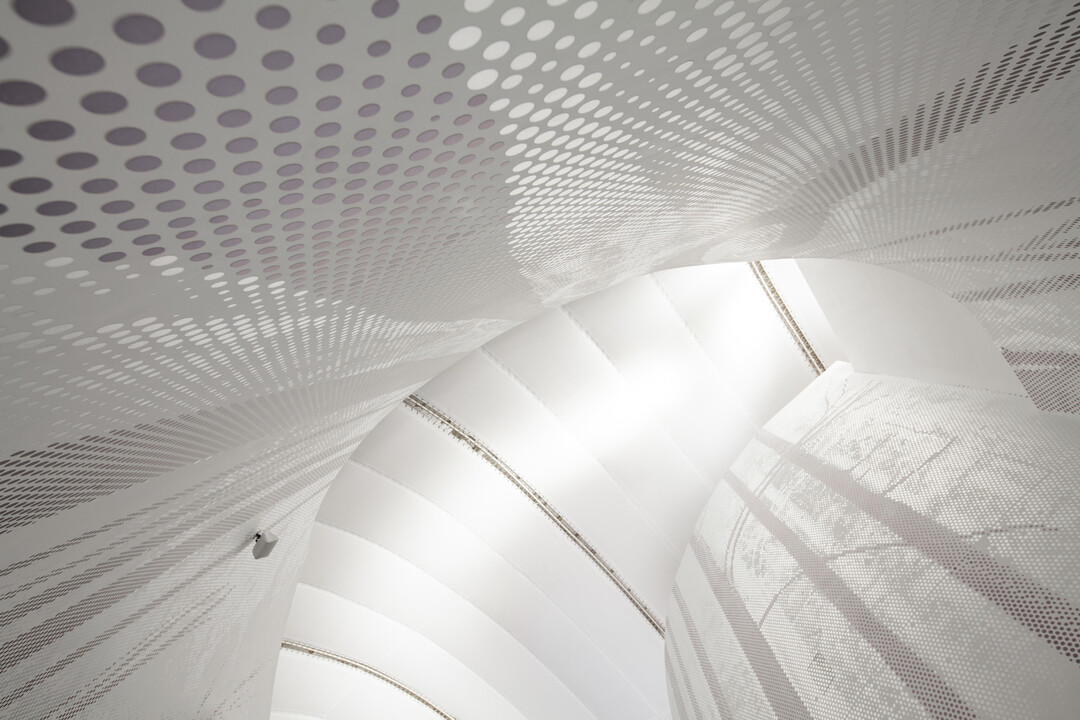
Members Only
加入會員後,點選Members Only即能閱讀更多完整文章及獨家內容。
緣側之家
緣側,也稱簷廊、廊台。在傳統日式建築裡,是介於鋪榻榻米的室內和庭院之間,有屋簷的外廊,具有通風、透氣、採光的用途。人們時常坐在緣側上欣賞庭園景觀,在微風吹動風鈴的夏季裡吃著西瓜乘涼,秋季欣賞楓紅葉落,冬季欣賞靄靄百雪,是一處匯聚情感與大自然交流的空間。設計師李靜敏在近期「北投李宅」作品裡,便以緣側融入溫泉宅設計,創造三代同聚一堂的渡假氛圍。李宅座落北投溫泉中心點,基地周邊盤繞溫泉水蒸氣,源源不絕的團團白霧為室內場景增添氣氛,由於位置鄰近北市近郊的山區,故設計亦以「山」為核心。
從玄關入內,入口端景由一幅水墨引步入室,畫中呈現山中小徑於盡頭豁然開朗,瞥見村外有山的意象,呼應前端地坪選用黑色大塊板岩象徵岩石沖積的感覺,硅藻底牆純粹自然,明暗之間猶如筆墨濃淡對比,呼應谷崎潤一郎於《陰翳禮讚》書中描述的日式空間。畫旁,銜接著緣廊的「精神支柱」。柚木細柱以手工綁繞亞麻繩,搭配從日本空運來台的和紙障子門,以及香杉天花板開啟一屋日式底蘊。
沿著「精神支柱」向內延伸,緣側在室內形塑了屋中屋,可完全收起的障子門(日語:しょうじ,意為日式房屋作為隔間用的橫式拉門),配合架高榻榻米與天花板,包覆成既開放又獨立的和室空間。完全敞開時,是寬廣的一大室,拉門從中關起則可分隔成兩間獨立房間。可同時連貫包含客廳、餐廳、廚房的開放公領域,也可以是家庭成員休息的臥房空間,最後搭配拉門敞開的景觀陽台,更有欣賞遠處山景的緣側式悠閒。而溫泉宅的核心湯屋,隱藏在格柵門片後方。
走入綠意山景,香杉香氣隨氤氳上升的熱度撲鼻而來,全室使用香杉,降板式溫泉湯池以綠橄欖石材打造而成,衛浴龍頭設備採用義大利cea品牌,簡單俐落的醫療級不鏽鋼材質,讓日式底蘊與現代設計風格並陳。在窗景方面採用防水風琴簾,觀賞日光夜色。未經上漆的香杉天花板不加嵌燈,入夜後一圓牆上光暈,打造星空下泡湯的幽微光景。主臥室天花板使用草編壁紙壓嵌木條手法製成,垂掛而下的白色燈飾,是設計師於京都覓得,值得收藏的大正年間手工玻璃燈具,點綴氛圍。客用廁所在外端以窯變磚和木格柵打造為一處端景,廁所內部以天窗引光入室,同時也可打開流通空氣。公領域的黑色磨石子地坪突顯了緣側設計,日式底蘊裡亦融入些許北歐家具,在溫泉渡假氛圍之餘含有現代悠閒感,為家庭打造一處舒適放鬆的休閒住所。